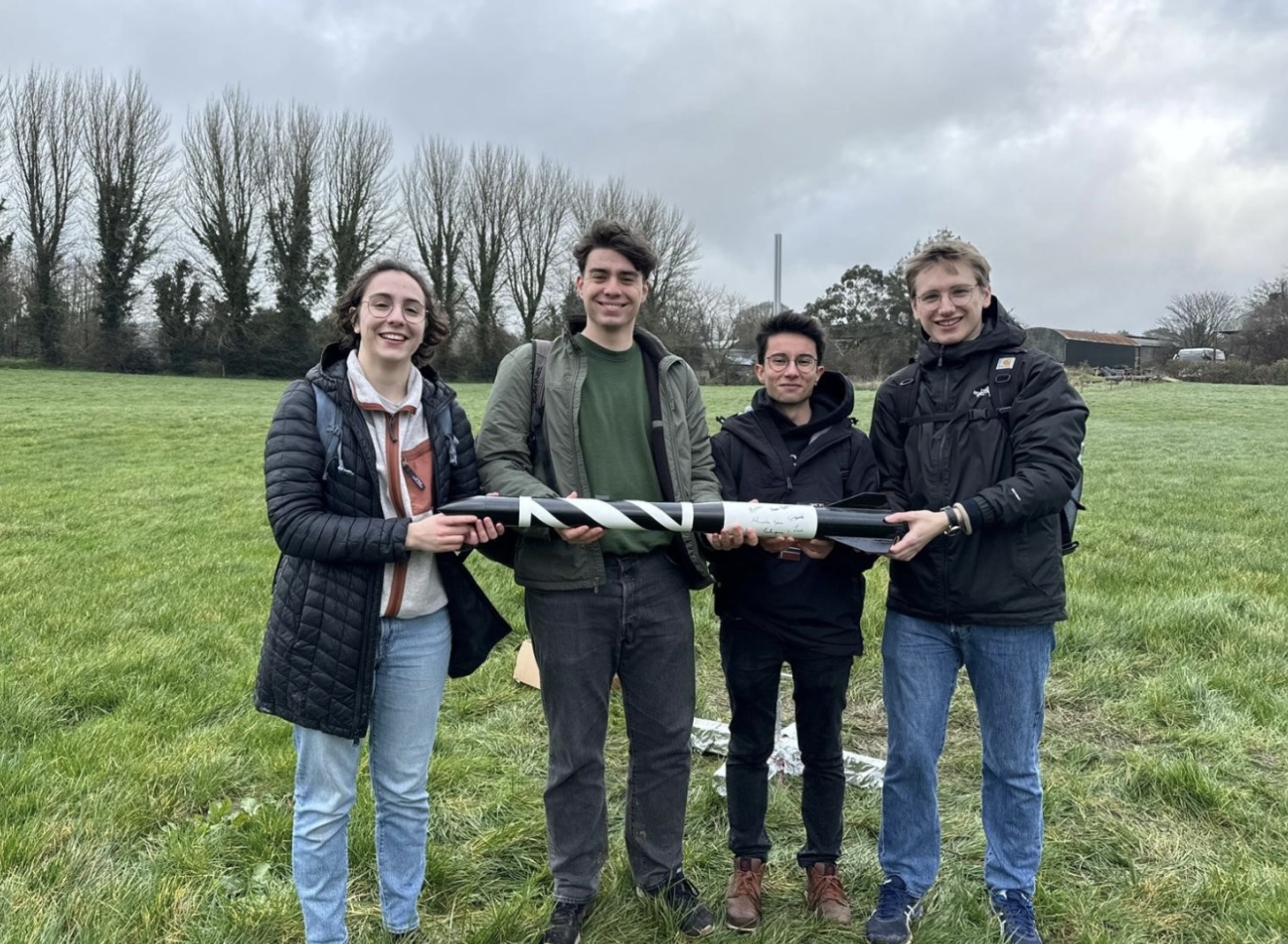Opening a new route to the sky, the Trinity Space Society reveals its journey towards the construction of its model rocket. I had the wonderful opportunity of sitting down with the genius team behind the making of this rocket – Grace Madison, Nathan Besch (Rocketry Officer), Alexander Farren, and Oskar Garcia de las Heras – and unravelling the tedious process behind it.
The team, formed in 2023, recently succeeded in their venture to reach amazing heights by organising a rocket launch on January 28 in County Wicklow. The team describes their end goal as launching the rocket, but also establishing a team that is capable of building a working rocket.
Jyotsna: What was the inspiration behind the project
Space Soc: A movie! The inspiration for the project is loosely derived from the movie October Sky (1999) based on the Sputnik 1 launch in October 1957. The team watched it together last year as a part of the bonding experience, Farren may or may not have forced the issue which made this possible.
“The rocket was named Puffin 1 because it’s painted black and white and it has a kind of a yellowish thing on the top, so we thought it looked like a puffin,” says Madison.
“We named the rocket Puffin 1 because of the colours but also in reference to [October Sky], in which the rockets are named Auk after a bird which cannot fly. So, we decided it would be fun to also pick a bird that cannot fly,” adds Farren.
Jyotsna: What was the process behind building the rocket?
The teamwork and determination of the team members is what ignites inspiration in others around them. The foundation of the project were the weekly meetings held in a room located in the museum building. Their initial priority was finalising the design for the rocket. After taking into account a vague idea of the height they wanted it to reach, they started collecting the various parts required to build it.
Besch comments that “Grace’s expertise was crucial on this. I don’t think we would’ve been able to build it if she was not here.”
The team was able to print custom 3D printed parts thanks to Garcia de las Heras with help from the Mechanical and Civil Engineering departments.
“Once you collect the parts, it becomes about the building process, which is not as long as you think it is, but it is delicate in terms of the order of assembly of the parts,” said Madison.
The entire building process only took about 3 or 4 hours.
Another important aspect of building the rocket was constructing the launchpad. Normally, launchpads are bought, not built, which only made the team’s experience even more unique and fun.
“We actually ended up with a wooden cross that people had to carry. I had to carry it all the way from that place, down the canal to the bus stop, on the bus and then all the way home,” said Farren.
The motor for the rocket was as big as could be without breaching regulations. The design for the rocket was based around it, with the aim being to make the rocket go as high as possible.
Jyotsna: What were the challenges you faced while making the rocket?
“With a huge triumph comes major difficulties”
The main challenges the team faced were with organisation. Since the team had never built together before, they had to learn and coordinate the team as the project progressed. Another one of the challenges they faced was finding the parts and importing them to Dublin.
“There were lots of issues. The main parts of the rockets were brought in from the US, and what we couldn’t bring in was made using a 3D printer or custom parts we could get here,” said Besch.
Through every obstacle, they never gave up! As a group, they overcame each and every challenge one by one!
Jyotsna: How did you feel when you realised your project had succeeded?
5th time’s the charm!
On the day of the launch, the motor wouldn’t ignite, which is a pervasive problem in model rocketry! Not only is it inconvenient, it could potentially prove to be hazardous. The team eventually launched the rocket on the 5th try in a very joyous moment!
Farren recalled, “The rocket actually flew upwards, but then at some point instead of continuing upwards it started falling down towards us! So we actually succeeded, but I was also pretty scared.”
“We were also standing right underneath it and we could just see a rocket dropping downwards like an arrow pointing at us!”
The incredibly tedious and enlightening process of building this rocket hopefully kicks a tradition to be carried on by the next generations of Trinity STEM students. Feel free to check out the Space Society’s Instagram and Twitter for more!
The team behind it all!
Grace Madison (Maths)
Nathan Besch (Astrophysics)
Oskar Garcia de las Heras (Mechanical Engineering)
Alexander Farren (Theoretical Physics)
Patryk Cwik (Engineering)
Jan Wawrzynek (Physical Sciences)
Leo Zimbalatti (Chemical Sciences)






